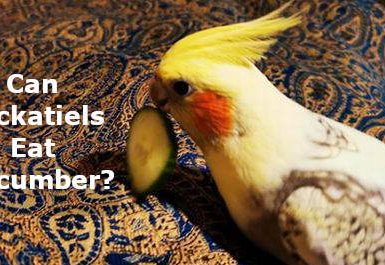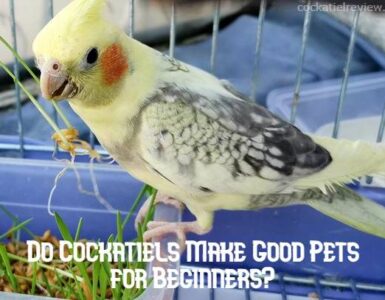
Budgies vs Parakeets: Differences and Similarities
Budgies and parakeets are two of the most popular parrot species kept in families. They are a must for bird lovers who want to learn more about birds. Both types are very trainable and make great favorites for the home.
However, both parrot species share some common traits and each has its own unique characteristics. Budgies, tame birds, tend to parody in their environment. Our feathered friends love to communicate.
Parakeets, on the other hand, are more functional and active, with an outgoing aptitude that looks like a “knightly reptile, sparkling silver spring and adventurous appearance.” This parrot pattern is still considered an impressive parrot, and almost all owners like to spend time learning the usual tirades on their family animals.
Physiological Characteristics
ORIGIN: Both grass parakeets and parakeets are considered members of the parrot family. They come from different parts of the world but occupy similar ecological niches.
Size: Grasspals are smaller in size than parakeets. They reach a length of about 18 centimeters, while parakeets have every opportunity to reach a length of up to 46 centimeters.
Color: Budgies come in all kinds of color variations, but the majority are greenish with yellowish faces and breasts. Parakeets have more variations including blue, yellowish, greenish, and reddish.
Nutrition: They eat seeds, fruits, and vegetables, as well as a variety of pellets and pasta. However, parakeets have a more varied menu, including grains and other organic products.
Size and Shape
Budgies vary in size from 15 to 18 cm. Their body size is small, their build is rounded, and their wings are short. Their breast and back feathers are often wavy, hence their name wavy. They also have short round bracelets.
Parakeets. Parakeets come in a variety of sizes. The smallest active brown parakeet is only 10 cm long, while the largest Amazon Parakeets are up to 45 cm long. Parakeets are slender in body shape and have bald-colored stripes on their short wings. Their tails are usually longer and straighter than the Budgies tails.
Conclusion. Both types of parrots distinguish themselves through body volume and shape. Budgies have short wings and small, rounded bodies. The slimmer body, longer wings and tail parakeets often have a straighter shape.
Coloration
The colors of the wavy cockatoo and the parakeet are very different. Some have colorful and very beautiful plumage, while others have more rustic plumage with brownish or grayish colors. The number of color variants depends on the subspecies and sex.
One of the more popular colors these birds come across is greenish. Everything from an almost yellowish tint to a true green occurs in nature. Color transformation can be caused by the development of hybrids or as a result of mutation.
Budgies:
– Blue
– White
– Yellow
– Gray
Parakeet:
– Yellow
– Gray
– Blue
– Purple
Some Budgies and parrots have every opportunity to mutate, in fact are very exciting to see, others protect their beauty thanks to their natural colors.
Characters and behaviors
Budgies:
- They have a striking personality and a chance to show a strong temperament.
- They like to be cared for and interact with people as well as with other birds.
- They make sonorous noises and have every opportunity to nominate text and tirade.
- They are unusually functional and curious and explore their environment daily.
- They are easily trained and can learn different tricks.
Parakeets:
- Friendly and gentle characters, they have the chance to become beautiful companions for lonely people.
- They are very social and need constant company and attention.
- They have every opportunity to make sounds and chat texts, but are not as sweet voiced as Budgies.
- They like energy and performance, especially in the presence of their owners.
- They are comfortable in the litter box and have every opportunity to learn some pretty difficult tricks.
Learning Ability
Budgies are considered great training birds. They have the opportunity to learn basic commands such as “sit”, “stand”, and “vlieg”. They also have every opportunity to make sounds and text, which makes them even more beautiful to learn.
Parakeets, especially English and Australians, remain popular for their learning ability. They learn new tricks and commands quickly and have every opportunity to nominate texts and tirades. However, they are more autonomous and insist on more supervision during learning.
Thus, both types of parakeets have the ability to learn, and while the Budgies is considered more advantageous for young birds, the parakeet has every opportunity to be more advantageous for the more skilled and demanding intensive interaction owner.
Intellectual Capabilities
Budgies:
– Budgies are considered free smart birds.
– They can remember up to 50 texts and are willing to name them.
– They can also make sounds they hear in the area around them.
– Budgies are willing to comply with the usual commands and this includes participation in thinking games.
Parakeets:
– Parakeets are still considered wise birds and are ready to learn texts and tirades by heart.
– They have every opportunity to parody the sounds they should parody around them.
– Parakeets can still pick up normal commands, but their mental abilities are generally less than those of Budgies.
Contract:
– Both birds are considered quite intelligent and can remember texts and sounds.
– Both birds have the potential to parrot speech and pick up normal commands.
Differences:
– Wavy parakeets generally learn more text and are willing to participate in more difficult games.
– Parakeets have slightly lower mental capacity, but are generally very sensible.
Care and Maintenance
Budgies:
– The cage must be large enough to easily fly the bird and the toys must be there.
– It is important that the bird has regular access to water and time for attention.
– Food should be varied and sumptuous, including fruits, vegetables, and grains.
– Spring care includes access to sunlight and systematic cutting.
Parakeets:
– The cage must be large enough to easily fly the bird and the toys must be there.
– It is important that the bird has regular access to water and time for attention.
– Food should be varied and sumptuous, including fruits, vegetables, and grains.
– Spring care includes access to sunlight and systematic cutting.
Power
Budgies are considered omnivores and their menu includes all types of seeds, fruits, vegetables, and herbs. Seeds such as bran, barley, millet, canary, and poppy seeds are considered the basis of their diet. It is also important to include fruits, vegetables, and herbs in your parrot’s menu. It is important to ensure adequate calcium and protein in the menu.
Parakeets require different foods than budgies. They have every opportunity to eat seeds as well as fruits, vegetables, herbs, fish, eggs and beef. This abundance of food is used to put together a more balanced menu. It is important to remember that the fat content of foods needs to be reduced. Therefore, parakeets must forget seeds for two years. Parakeets also need food containing calcium and vitamin A.
General advice regarding the supply of paraquat and grass paraquat: pay attention to the condition of the bird. Certain foods, such as chocolate and alcohol, are strictly forbidden. It is important to drink water daily and clean the food bowl regularly.
Popularity and Distribution
The waved parrot is one of the most famous family birds in the world. They have been domesticated since the time of the ancient Egyptians and have been considered a family favorite for centuries since then. Today they are spread throughout the world and are sold in specialty pet stores and growers.
Parakeet is the common name for the small birds of the parrot family. There are many species of parrots and their spread depends on the particular species. For example, the greenish parakeet can be found year-round in Australia, while the yellowish rosella is common in South Australia and the Tasmanian Peninsula.
Budgies are relatively inexpensive birds, making them cheaper to buy as a first pet. Inlachites, on the other hand, usually cost more and depend on a special appearance. Some types of parrots, such as the Alexandra’s Parakeet, have the opportunity to cost hundreds of dollars.
Are American Budgies called “parakeets”?
In the United States, budgies are called “parakeets” because this is the South American name for these birds. The term “parakeet” comes from the French “paroquet.” This means “little parrot. The British refer to the bird “budgies,” which is an abbreviation for “badgegal,” coming from the language of the indigenous and “good people” of Australia.
Although different names are used for the British and American parakeets, they usually have the same appearance and the same characteristics. They are considered well-known pets and are popular for their colorful, juicy plumage, intelligent behavior, and taming.
However, it does indicate that there may be differences in terms and names for the same animal in different countries and regions. Therefore, when traveling or communicating with people from other cultures, it is important to consider this precedent and be prepared for differences in names and terminology.
Global Distribution
Budgies are one of the most popular family birds in the world. They originally come from the Australian part of Oceania and live in a variety of countries including Australia, Indonesia, and Papua New Guinea. Due to their reputation as family animals, Budgies have been introduced in unrestricted environments in various states around the world, including the United States, Japan, and New Zealand.
The inrachiette, on the other hand, is considered a special category of parrot with a long tail and a small amount of volume. This bird pattern is present in other countries as well, mainly in the Oceania part of Australia and in South Africa. However, along with the Budgies, they are introduced in almost all countries of the world as family animals and are normal in Canada, the United States and Europe.
Thus, both bird species have spread throughout the world, not only because of their origins, but also because of their own economic popularity.
Quick Answers
Q: What is the difference between a budgie and an inrachiette?
Ans: Parakeet is the collective name for a variety of parrot species belonging to different families. Budgies, on the other hand, are considered a separate species belonging to the Melopittacus family. For example, Budgies are counted among the parrot phases.
Question: What are the dimensions of the budgies and the inrachiette?
Answer: the budgies reaches a length of 18 cm, while the dimensions of the parakeet have all the opportunities to vary in length from 10 to 100 cm, depending on the species.
Question: Can grass parrots and parakeets be together in the same cage?
Answer: Yes, they can share a cage and it is not uncommon in families. However, keep in mind that animals may have initial relationship problems and there is potential for territorial incidents.
Question: How do I care for a budgies and an inrachiette?
Answer: Both species require constant care, including food, cage cleaning, and feather care. For budgies, it is recommended to feed them lime key, such as special granite or mineral blocks. The bird’s welfare must be monitored and a veterinarian consulted if necessary.






Add comment